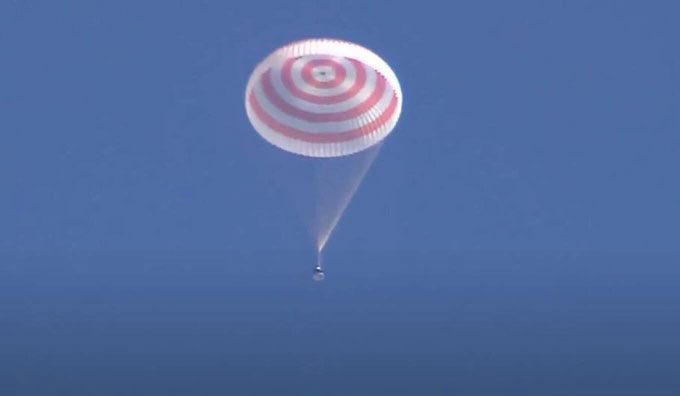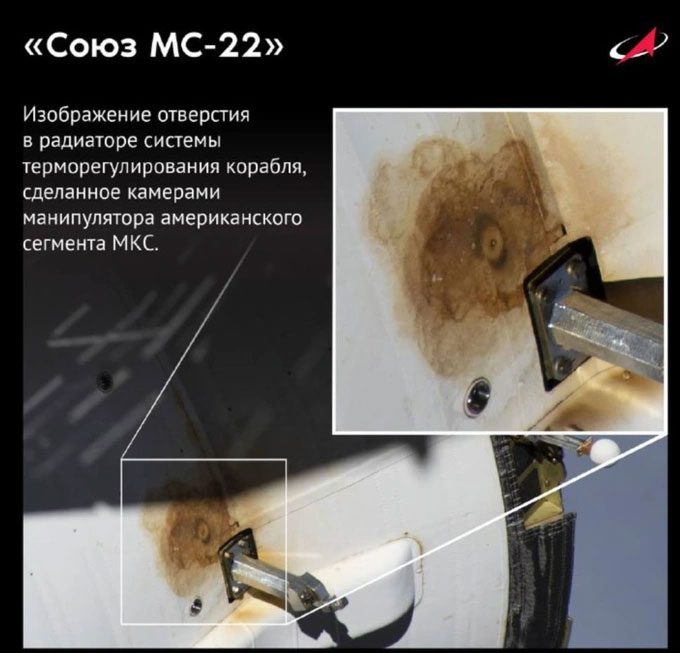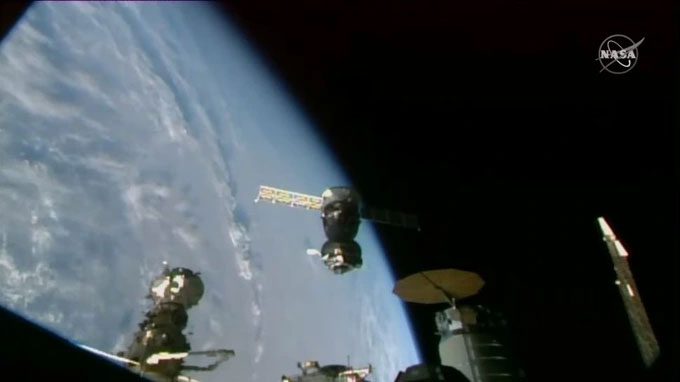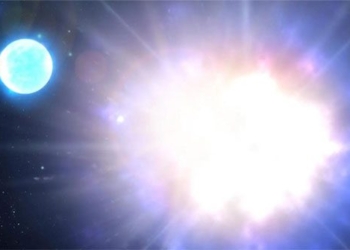The Soyuz MS-22 spacecraft, which experienced a coolant leak, has safely returned to Earth after a 6-month journey in space.
After completing its mission, the Soyuz MS-22 spacecraft from the Russian Federal Space Agency (Roscosmos) safely landed on Earth at 18:46 on March 28 (Vietnam time) in a steppe near the city of Dzhezkazgan, Kazakhstan.

Soyuz MS-22 deploying parachute, landing in a steppe near Dzhezkazgan, Kazakhstan. (Photo: Roscosmos).
At the time of landing, the Soyuz MS-22 was uncrewed and had almost no coolant on board—a critical component for maintaining life support and ensuring the smooth operation of the spacecraft’s systems.
Inside the spacecraft’s cargo hold were approximately 218 kg of cargo, including scientific experiment results and equipment from the ISS for analysis or reuse.
“The process of the Soyuz MS-22 leaving orbit and landing on Earth went smoothly,” officials from Roscosmos stated in a post on Telegram.
NASA spokesperson Rob Navias reported that Soyuz MS-22 left orbit just 55 minutes after undocking, significantly earlier than the standard time of 2.5 hours. This was within the allowable range since the spacecraft was not carrying a crew.

An image shared by the Russian space agency Roscosmos showing the location of the coolant leak. (Photo: Roscosmos).
In September 2022, Roscosmos launched the Soyuz MS-22 spacecraft to transport three astronauts—Sergey Prokopyev and Dmitri Petelin from Russia, and Frank Rubio from the United States—to the International Space Station (ISS) for a 6-month mission.
However, in December, during the halfway point of the mission, the Soyuz experienced an unidentified coolant leak, causing coolant to escape into space.
Initial assessments suggested that the spacecraft may have collided with small meteoroids. Due to the severity of this incident, which could significantly affect the safety of the return to Earth, the Soyuz MS-22 would certainly not carry a crew on its return journey.

Soyuz MS-22 shortly after undocking from the ISS on March 28. (Photo: NASA).
In response to this unfortunate incident, Russia immediately initiated an investigation to determine the cause and find a solution. On February 23, Roscosmos launched the crewed Soyuz MS-23 to the ISS as a replacement for the leaking spacecraft.
The astronauts involved in this mission are likely to return to Earth later this year aboard the new spacecraft after completing a full year of work in space.
Meanwhile, the Soyuz MS-22 was brought back to Earth early to conduct in-depth scientific experiments aimed at understanding the cause of the leak and providing solutions for similar situations in the future.





















































